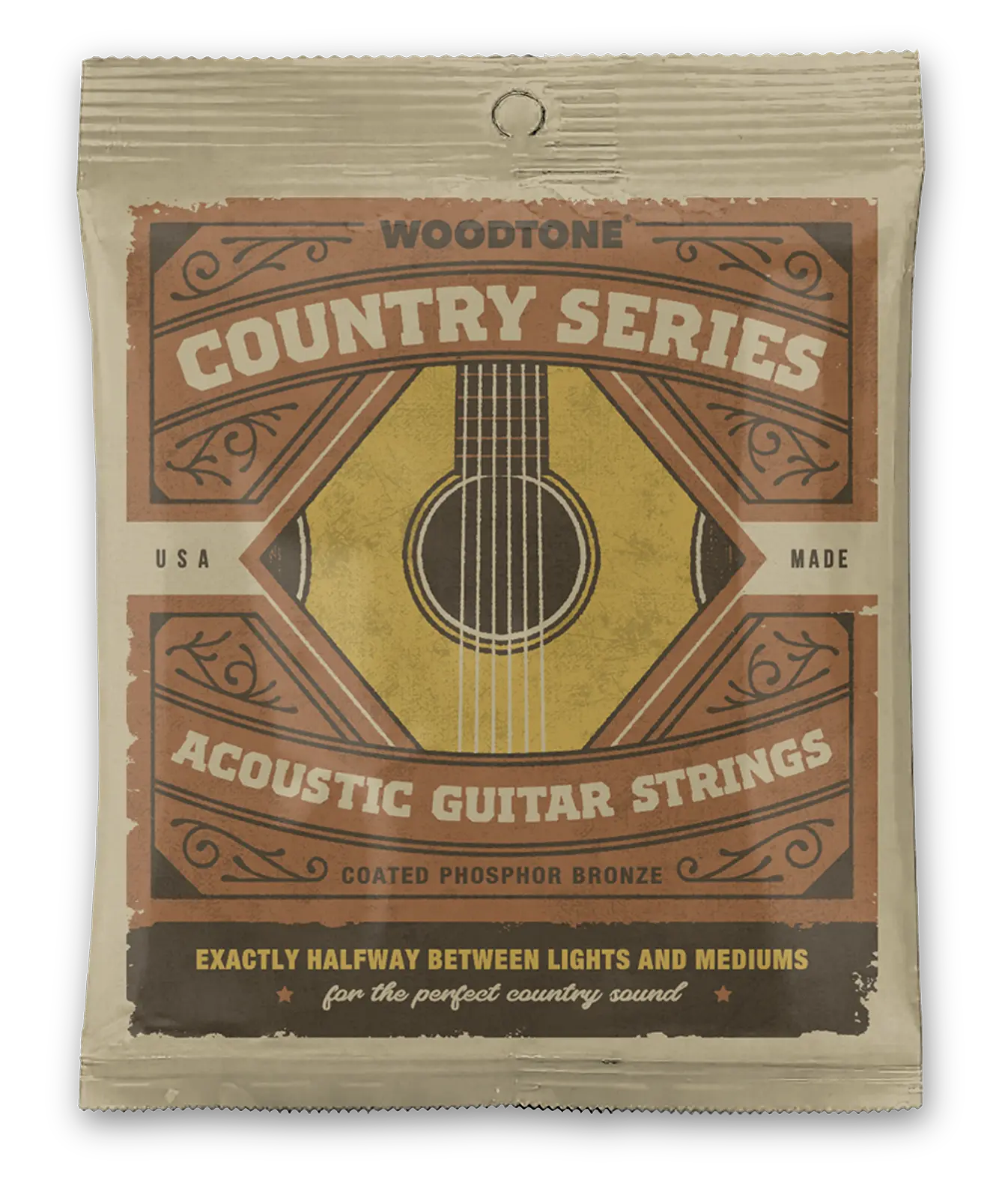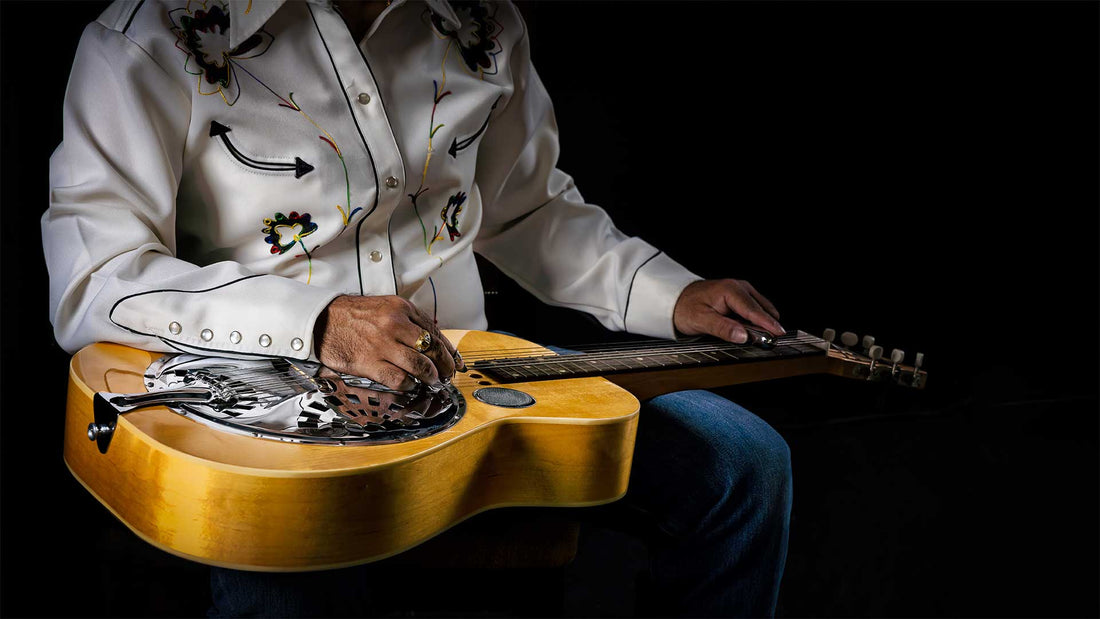In the world of stringed instruments, the dobro has a unique sound and look that sets it apart from traditional guitars. Often featured in bluegrass, country, blues, and folk music, the dobro is celebrated for its distinctive, resonant sound and slide guitar capabilities. But what exactly is a dobro, and how does it differ from other guitars? Let’s dive into the details to explore the rich history, mechanics, and impact of this captivating instrument.
1. What is a Dobro?
Dobro is an American brand of resonator guitars owned by Gibson and manufactured by its subsidiary Epiphone. Over time, however, the word "dobro" has become a generic term for any wood-bodied, single-cone resonator guitar. Think of it like Kleenex -- the word "Kleenex" is actually a brand name for facial tissues trademarked by Kimberly-Clark Worldwide, but the word kleenex (lowercase k) has become a generic term for disposable facial tissues.
A dobro is a type of resonator guitar known for its warm, metallic, and resonant tone. The term “dobro” originally referred to a brand of resonator guitars created by the Dopyera brothers (hence the name "Dobro," which is a blend of “DOpyera BROthers”) in the early 20th century. Over time, however, it has become a generic term used to describe any resonator guitar with a specific type of construction.
A dobro typically has a unique sound due to the metal resonator cone(s) placed under its bridge, which amplifies the sound differently than a standard guitar body. The dobro is often played with a slide (either on the finger or as a bar), adding to its distinctive, gliding tone. While resonator guitars come in both round-neck and square-neck varieties, the square-neck dobro, specifically, is known for being played in a lap-style position.
2. How Does a Dobro Work?
The dobro’s signature sound comes from its internal metal resonator cone, a type of mechanical amplifier. Unlike traditional guitars, which rely on the body and soundhole to project sound, the dobro's resonator amplifies vibrations, producing a louder and brighter tone. This setup was originally intended to make guitars louder, especially in pre-electric music environments where other instruments could easily drown out a guitar.
Here's a breakdown of the key components:
- Resonator Cone: Typically made from spun aluminum, this cone acts like a speaker, amplifying the sound created by the guitar’s strings. The cone gives the dobro its characteristic metallic and often “twangy” sound.
- Bridge: Unlike on a typical guitar, the bridge on a dobro rests directly on the resonator cone, allowing vibrations to transfer directly to the metal for amplification.
- Body Material: Dobros are often made of wood or metal, affecting their tonal quality. Wooden dobros are warmer in tone, while metal-bodied ones are brighter and more metallic.
The instrument can also have one or two resonator cones depending on its design. A dobro with two cones is called a "Tricone" and produces a slightly different sound than a single-cone model.
3. Types of Dobros
While the dobro brand originally defined resonator guitars, the term now includes a few different types. Here are some of the main varieties:
- Round-Neck Dobro: Played similarly to a standard guitar, these are often played with fingers and occasionally with a slide. This style of dobro is popular in blues and jazz.
- Square-Neck Dobro: Meant to be played flat (often on the lap or held with a strap like a lap steel), the square-neck dobro is primarily played with a slide or bar rather than fingers. This type of dobro is especially popular in bluegrass music.
- Tricone Dobro: This variety includes three smaller resonator cones and is often favored for its slightly smoother sound.
Each type has its own unique playability and tonal characteristics, making the dobro versatile across different musical genres.
4. A Brief History of the Dobro
The dobro's journey began with John Dopyera, who wanted to create a louder guitar that could hold its own in ensembles. In 1928, he developed the first resonator guitar, introducing a groundbreaking design that replaced the soundhole with a resonator cone. This change amplified the sound without electronic amplification, meeting the needs of performers in jazz and other loud musical environments.
Dobros became widely popular during the 1930s and 1940s, especially in blues and bluegrass. Eventually, the company merged with other manufacturers, and today, the dobro name is owned by Gibson, although numerous brands produce resonator guitars.
5. How is a Dobro Played?
A dobro can be played in several styles, making it adaptable across genres:
- Slide Technique: Dobros are most commonly associated with slide playing, where the player uses a metal or glass slide to create smooth, gliding notes. This technique allows for expressive, vocal-like tones, perfect for blues, country, and folk.
- Fingerstyle: Some players use fingerstyle techniques on round-neck dobros, bringing out rich textures and harmonics.
- Lap Style (Square-Neck Dobro): The square-neck dobro is typically played on the lap with a steel bar slide. This technique is common in bluegrass and Hawaiian music, emphasizing the instrument’s bright, resonant tones.
6. Dobro vs. Other Resonator Guitars
While all dobros are resonator guitars, not all resonator guitars are dobros. Here’s how the dobro compares to other resonator guitars:
- Dobro vs. National Resonator: Nationals use a different cone structure and often a metal body, leading to a louder, sharper tone. Dobros, on the other hand, have a warmer, more balanced sound, especially in square-neck versions.
- Dobro vs. Acoustic Guitar: Dobros are usually louder than acoustic guitars and produce a unique, twangy resonance. They also support slide playing and are often used in lap-steel style.
7. Famous Dobro Players
Many musicians have contributed to the dobro's popularity:
- Jerry Douglas: Often regarded as one of the best dobro players, Douglas has redefined the instrument in bluegrass and country music.
- Brother Oswald (Beecher Ray Kirby): Known for popularizing the dobro in bluegrass music, Oswald brought the dobro’s characteristic sound to the Grand Ole Opry.
- Taj Mahal: Blending blues, folk, and world music, Mahal is another influential dobro player.
8. The Dobro’s Role in Modern Music
The dobro remains a staple in bluegrass, Americana, and country music, but its versatility has also brought it into folk, blues, and even rock genres. Its expressive sound and unique tonality make it a sought-after instrument for adding depth and character to music.
What strings should you use on a squareneck resonator guitar (aka dobro)?
Determining which strings to use on a dobro can be really confusing!
If you have a squareneck resonator guitar (dobro) that you play on your lap in GBDGBD tuning, for strings, we highly recommend our Woodtone Squareneck Resonator Guitar Strings. Each string is gauged perfectly for squareneck resonator guitars (dobros) and we guarantee you'll love their tone.
Conclusion
The dobro is a fascinating and iconic instrument that has evolved from its origins as a brand to a key part of American roots music. Its distinctive resonator design, captivating slide technique, and unique tonal qualities make it beloved by musicians and listeners alike. Whether you’re a musician looking to explore new sounds or simply an enthusiast, the dobro offers a rich world of resonance and artistry worth exploring.



